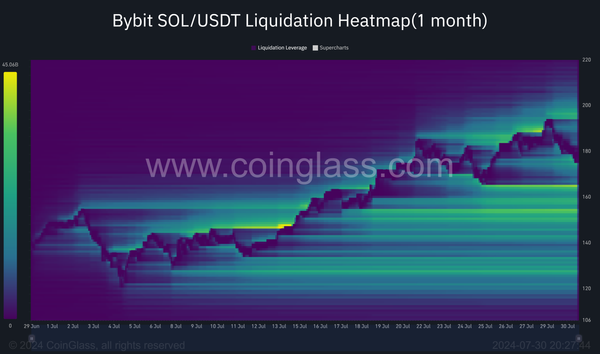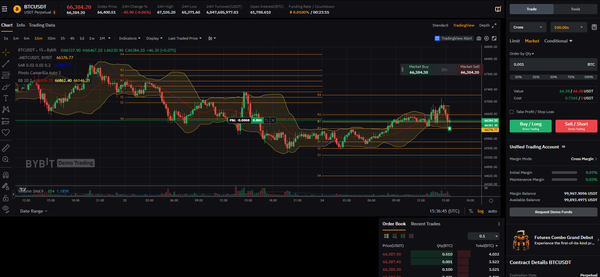Trading Perpetual Crypto Futures: Navigating Isolated Margin and Cross Margin

Margin trading in the cryptocurrency world offers traders the leverage to amplify their trading positions, aiming for higher returns than would be possible with their capital alone. However, with the potential for increased profits comes a proportional increase in risk, especially in the volatile crypto market. Two key concepts in this high-stakes trading arena are isolated margin and cross margin. Understanding these can be the difference between a strategic win and a devastating loss.
High Leverage Trading Example: $5,000 Margin with 200x Leverage on BTCUSDT
Consider a scenario where you're trading BTCUSDT (Bitcoin to USDT pair) with $5,000 in margin and decide to apply 200x leverage. This leverage allows you to control a position worth $1,000,000 ($5,000 x 200). While this significantly increases your potential for profit, it also magnifies the risk of loss.
Impact of a 3% Move on the Underlying BTC Asset
Let's analyze the effect of a 3% price movement in Bitcoin on this leveraged position:
- If Bitcoin's price increases by 3%, your $1,000,000 position is now worth $1,030,000. This price movement results in a $30,000 gain on your initial $5,000 margin, effectively multiplying your investment sixfold due to the leverage.
- Conversely, if Bitcoin's price decreases by 3%, your position's value drops to $970,000. This represents a $30,000 loss on your initial $5,000 margin, essentially wiping out your investment and potentially triggering a margin call or liquidation, depending on the platform's policies and the presence of any additional collateral in your account.
Isolated Margin: Controlled Risk for Each Trade
Isolated margin allows traders to allocate a specific portion of their funds as collateral for a particular trade. This method caps the potential loss to the allocated amount, protecting the rest of the account balance from being affected by a single losing position.
For example, if you allocate 2 BTC from a 10 BTC account as isolated margin for a leveraged trade and the market moves against you, only the 2 BTC is at risk. This segmentation of risk makes isolated margin a preferred choice for traders who wish to manage their risk exposure meticulously on a per-trade basis.
Cross Margin: Utilizing the Entire Account Balance
Cross margin, in contrast, uses the entire account balance as collateral for all open trades. This approach can be beneficial when holding multiple positions, as profits from winning trades can offset losses from losing ones, potentially preventing premature liquidation.
However, this also means that a series of unfavorable market movements could risk the entire account balance, as all funds are pooled to cover margin requirements across all positions. Cross margin is suited for traders who prefer a more holistic approach to risk management, leveraging their entire portfolio to support their trading strategy.
Key Differences and Considerations
- Risk and Collateral: Isolated margin limits risk to the allocated amount for a specific trade, while cross margin spreads risk across the entire account balance.
- Management and Flexibility: Isolated margin requires active management and adjustments to prevent liquidation, whereas cross margin offers a more hands-off approach, automatically balancing between trades.
- Suitability: Isolated margin is ideal for traders focusing on specific, high-conviction trades. Cross margin benefits those managing multiple positions, potentially hedging across different assets.
Pros and Cons
Isolated Margin
- Pros: Precise risk management, clearer P&L calculations, and protection for the rest of the portfolio.
- Cons: Requires closer monitoring and manual adjustments to avoid liquidation, potentially limiting leverage.
Cross Margin
- Pros: Flexibility in margin allocation, reduced liquidation risk through portfolio balancing, and simplified management for multiple trades.
- Cons: Higher risk of total account liquidation, less control over individual trade risks, and potential for over-leveraging.
Strategic Integration of Both Margins
A nuanced approach might involve using both isolated and cross margin strategies to balance risk and reward. For instance, allocating a portion of your portfolio to a high-conviction trade using isolated margin while using cross margin for hedging positions across the rest of your portfolio. This method requires diligent monitoring and adjustment based on market movements and performance of individual positions.
Closing Thoughts
The choice between isolated and cross margin in crypto trading hinges on individual trading strategies, risk tolerance, and management preferences. Both options offer unique advantages and challenges, underscoring the importance of understanding their mechanisms and implications. As volatility remains a hallmark of the crypto market, informed decision-making and rigorous risk management practices are essential for navigating the complexities of margin trading. Always conduct thorough research and consider consulting with financial experts before engaging in leveraged trading.




